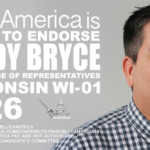I give major props to the White House for their new messaging strategy, focused on the theme of We Can’t Wait. It’s one I have been thinking they should use for a long time now, because it combines attacks on the Republicans for doing nothing on jobs with taking executive action that it is within the power of every President to take. The President has been far more aggressive in recent weeks in taking on the Republicans for having a job killing, help-only-the-top-1-percent agenda, which is all for the best. The great thing about his newest communications strategy unveiled on Monday was a set of administrative changes on housing (which I will get to in a minute). The language in Dan Pfeiffer’s post on Monday was all about how the President is not waiting, he is moving forward on specific executive action steps. And it is clear from Pfeiffer’s post and other White House communications that the White House will be rolling out a series of different kinds of actions — executive orders, new regulatory moves, etc. Tuesday, the White House followed up the housing initiative with a new set of executive actions to help students with their student loans.
This is a great trend with a lot of potential if the President wants to do more to help middle-class and low-income Americans. He can, for example, issue executive orders mandating that the federal government’s contractors and suppliers of products pay their workers good wages and have decent benefits. He could create a White House on improving jobs and income for the middle class that aggressively works with each agency to figure out ways to create more good jobs. He could toughen up the Buy America provisions on procurement. He could really begin to squeeze the Chinese on currency manipulation. There are a lot of things the President can do to help the middle class and those trying to climb their way into it where he doesn’t have to wait for Congress. He is not the Legislator-in-Chief: the executive branch has enormous powers it can use to help people. I hope the new messaging strategy coming out of the White House is a sign of more things to come. Because us 99 percent sure do need the executive branch to be on our side.
You know where the executive branch has the most ability to help the middle class right now? It is in the area of housing and banking policy, which was the topic of Monday’s media announcement. I am very happy the President has become increasingly aware of the huge problems in this area, and that he wants to do something about them. The problem is that it is increasingly obvious that really big things are needed, because the problems we have in the banking/housing sector are deadly serious. So while I am happy with some of the changes the White House announced Monday, such as removing barriers to mortgage holders getting assistance and figuring out how to reduce or eliminate some fees for homeowners wanting to restructure their mortgage, I still fear that the White House is thinking way too small given the scale of the problem.
Negative equity (the 25 percent-plus of homeowners who are underwater on their mortgages) and toxic bank assets that aren’t coming back any time in the foreseeable future are quite literally drowning our economy. Houses aren’t selling, home prices in many areas are still dropping, home building is a dead industry, consumers aren’t spending because they are so stretched on their house payments. And the big banks are still tottering — and not just because of the spiraling crisis in Europe.
We are not living in a conventional economic moment. The housing bubble and subsequent collapse has created wreckage we cannot dig our way out of with the modest-sized steps the administration laid out on Monday. While positive, they are not big enough or bold enough. The only way to solve this is with a massive writedown of housing debt, and by moving to resolution authority on the worst of the big banks — doing what the FDIC does all the time with smaller failing banks, taking them over and selling off the assets in orderly fashion. However painful, however much the bankers and Republicans in Congress will scream in outrage, it really is the only answer to fixing our dead in the water economy.
This is a do-over moment for the President. Ron Suskind’s book, “Confidence Men,” made clear: Obama wanted to do the right thing on the big banks in 2009. He wanted us to choose the path Sweden chose to get back to economic health in the 1990s —rather than the one that led to Japan’s lost decade — a path that involved directly taking on the big banks. He wanted to take over Citibank and send it to resolution authority. But Rahm Emanuel, Larry Summers and Geithner didn’t follow his orders, slow-walked things until they weren’t relevant anymore, and gave us the policies that are potentially sending us to our own lost decade. These missed policy chances gave us a terribly weakened economy, and gave the public the perception the President was soft on Wall Street. Obama now has a chance to get this economy back on the road to a real recovery, and to simultaneously show that he will stand up the Wall Street tycoons.
When Dodd-Frank was passed, we were promised there would be no more bank bailouts, and that our government was once again capable of doing what needs to be done in terms of bringing the Wall Street tycoons who wrecked our economy to heel. Now is the moment to prove that right. Start by putting the zombie bank Bank of America in receivership where they belong — the Dodd-Frank bill gives us the resolution authority to get that done. Next, drop efforts to give bankers immunity for the million-plus counts of perjury and fraud they have likely committed with the robo-signing and other foreclosure-related scandals, and force them to the table so they will finally write down the mortgage debt on all these underwater mortgages. Finally, get DOJ involved in helping to investigate fraudulent banking practices, and get the anti-trust division involved too, because unless these banks start to get broken up, our financial marketplace will continue to be badly warped by their overwhelming market power.
These are very big things. They will take huge political courage. But big things have to be done, and done soon. Read this piece by Robert Kuttner on how close to the edge of oblivion we are because of the big banks. The scary thing is that the economic experts who know the world of banking the best tell me that Kuttner in fact is underestimating the depth of the problem.
These are huge steps, but the Obama administration has the ability to do them. If the 2008 crisis proved nothing else, it is that our government in a financial crisis has the ability to do whatever needs to be done in a crisis. There’s a story that when Bear Stearns was being forced by Hank Paulson to merge with Morgan in 2008, that the Bear Stearns board was balking at the incredibly low price they would be getting on their shares of stock. Paulson calmly informed them he had brought a team of FBI agents with them, that if the merger was not agreed to he would be seizing every computer in the building and the FBI would start combing through the books and emails to see what illegal acts were committed. The Bear Stearns board immediately voted to go forward with the merger. The management of these huge banks on Wall Street know they have been blatantly violating all kinds of laws for a long time, which is why they are so eager to do a quick settlement with the state AGs and the feds for legal immunity. The administration has the tools, both legal and regulatory, to force them to the table and get things done. But they need to step up and make it happen. Given the deep and overwhelming problems in the financial and housing sectors, doing big things is the only way to get the economy back on track.














